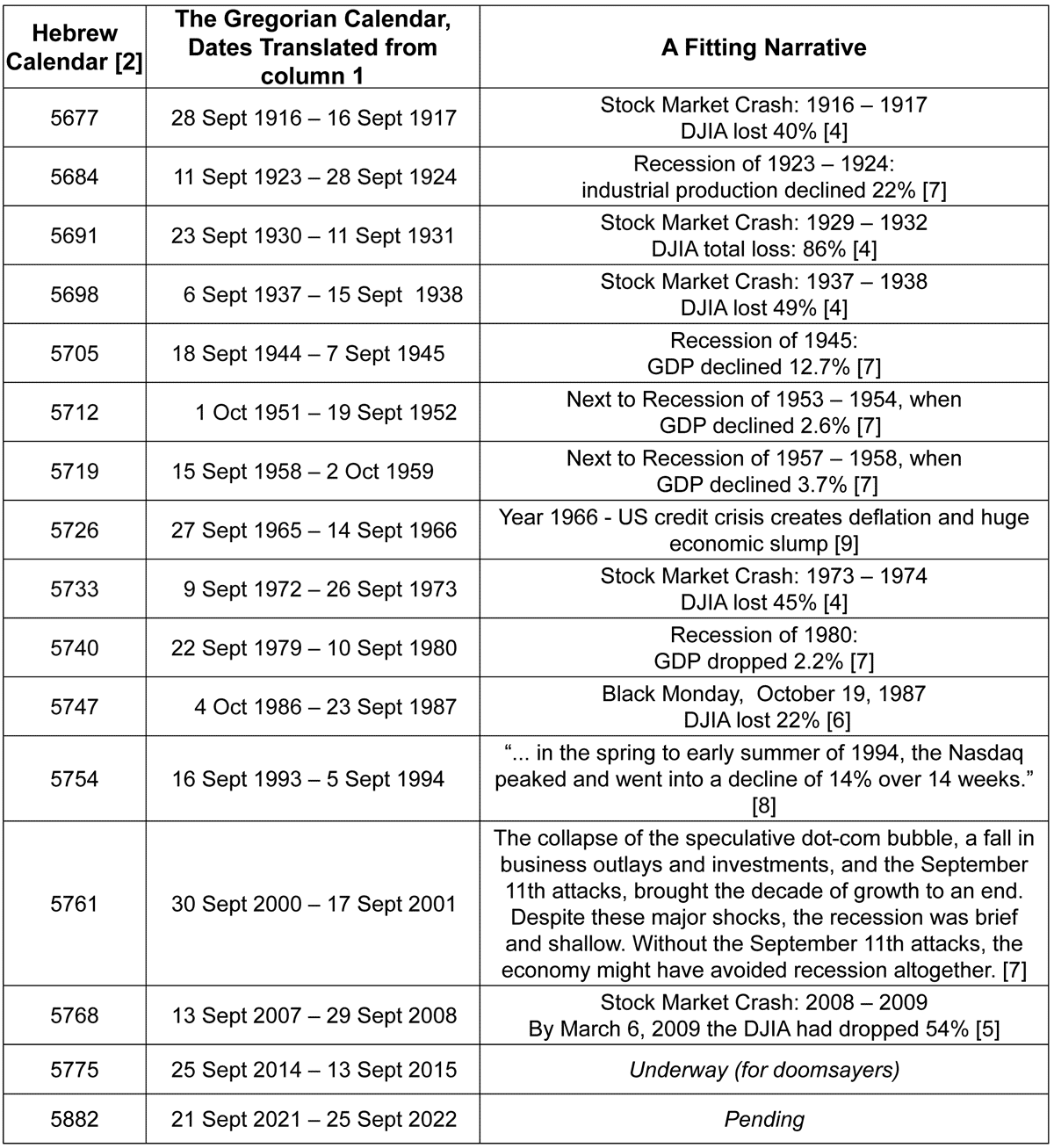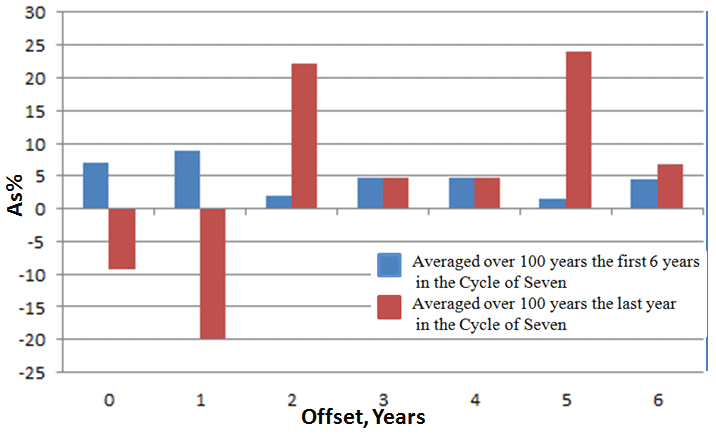
HOT TOPICS LIST
- Strategies
- Stocks
- Buy
- Investing
- Brokers
- Psychology
- Interviews
- Accumulate
- Sell
- Hold
- Spotlight
- Websites
- Candlestick Corner
- Gold & Metals
- Options Trading
LIST OF TOPICS
CYCLES
The Cycle Of Seven
06/25/15 10:56:48 AM PSTby Slawomir Bobrowski
Does the market really move in a cycle every seven years? Let's find out.
| Several studies have correlated astrological cycles to market cycles but rarely do you come across comparisons between market cycles and Shemitah or the cycle of seven years. The cycle of seven is defined in the Book of Deuteronomy, verses 5:1-2, when the ancient Israelites were instructed, "At the end of every seven years you shall grant a release of debts. And this is the form of the release: Every creditor who has lent anything to his neighbor shall release it; he shall not require it of his neighbor or his brother, because it is called the Lord's release." HYPE OR REAL? I am referring here to the book "The Harbinger" by Jonathan Cahn, which has been on the New York Times bestseller list for more than 110 weeks. Evidently, the subject is a hot topic, given the general feelings of economic and political uncertainty around the world. I have a database of the Dow Jones Industrial Average (DJIA) going back to 1915, so I decided to put Shemitah to test. I wanted to find a correlation between the Shemitah occurrence per the Hebrew calendar and the annual swings of the DJIA. |
| STARTING FROM THE NARRATIVES Converting from Hebrew to Gregorian dates is fairly easy. However, there is some lack of overlap between the corresponding years -- Shemitah usually begins and ends in September, and the best fit in a Gregorian calendar to accommodate Shemitah can be achieved by having the last quarter from the preceding year appended to the first three quarters of the Gregorian year. Fortunately, my database has the quarterly records of DJIA, which helps when processing data using a computer program. The table in Figure 1 provides date conversions and narratives for the Shemitah years.
FIGURE 1: SHEMITAH YEARS DURING THE LAST 100 YEARS. Here you see what took place during the Shemitah years in the Dow Jones Industrial Average going as far back as September 1916. MEASURING MARKET HEALTH
FIGURE 2: NON-SHEMITAH AND SHEMITAH YEARS SINCE 1915. These Shemitah dates are as per those mentioned in The Harbinger by Johnathan Cahn. The Shemitah years should be marked by negative DJIA swings. |
| I will shift the cycles of seven against their traditional Shemitah locations. For each offset, I computed an average of swing summations. The results of these trials can be seen in Figure 3. Shifting the cycle of seven one year forward gave surprisingly good results: The average seventh-year swing value changed from -9.2% to -19.9%, and the probability of its occurrence during that seventh year improved to 71%. Now, this may satisfy many traders/investors. The optimized cycle of seven can be seen in Figure 4.
FIGURE 3: SEVEN-YEAR CYCLE RESULTS. Shifting the cycle of seven one year forward gave surprisingly good results: The average seventh-year swing value changed from -9.2% to -19.9%, and the probability of its occurrence during that seventh year improved to 71%.
FIGURE 4: OPTIMIZED CYCLE OF SEVEN SINCE 1915 IS THE MARKET HEALTHY? To reiterate the results of my analysis:
FURTHER READING
|
Slawomir Bobrowski is a California-based professional engineer. He has been working for major aerospace companies, both on civilian and military projects, since 1985. He has been trading stocks since 1991.
PRINT THIS ARTICLE

|

Request Information From Our Sponsors
- StockCharts.com, Inc.
- Candle Patterns
- Candlestick Charting Explained
- Intermarket Technical Analysis
- John Murphy on Chart Analysis
- John Murphy's Chart Pattern Recognition
- John Murphy's Market Message
- MurphyExplainsMarketAnalysis-Intermarket Analysis
- MurphyExplainsMarketAnalysis-Visual Analysis
- StockCharts.com
- Technical Analysis of the Financial Markets
- The Visual Investor
- VectorVest, Inc.
- Executive Premier Workshop
- One-Day Options Course
- OptionsPro
- Retirement Income Workshop
- Sure-Fire Trading Systems (VectorVest, Inc.)
- Trading as a Business Workshop
- VectorVest 7 EOD
- VectorVest 7 RealTime/IntraDay
- VectorVest AutoTester
- VectorVest Educational Services
- VectorVest OnLine
- VectorVest Options Analyzer
- VectorVest ProGraphics v6.0
- VectorVest ProTrader 7
- VectorVest RealTime Derby Tool
- VectorVest Simulator
- VectorVest Variator
- VectorVest Watchdog




